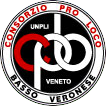GEOGRAPHY
Cerea, with ith its surface of 70.30 km², is located at an average altitude of 18 m above sea level. It is 34 km southeast of Verona, in the Basso Veronese valley. It includes a small natural reserve known as palude del Brusà through which the river Menago flows. Its six fractions are: Aselogna, Asparetto Cherubine Palesella, Santa Teresa and San Vito Martire. It borders the Comuni of Legnago, Bovolone, Angiari, San Pietro di Morubio, Casaleone, Sanguinetto, Concamarsie (province of Verona), Melara, Bergantino (Province of Rovigo) and Ostiglia in the province of Mantova.
ETYMOLOGY
The name probably comes from the Latin word cerrus, followed by the -etum suffix. This information is recorded in a document of 932, that mentions archdeacon Epirando’s decree that granted to the inhabitants of Cerea, upon the payment of four silver coins, a permit for the reconstruction of the houses in “Acereta seu Cerete”, a small bourg of the Veronese Church. Its name is likely to come from “cerro” or “acero” (maple tree), common in the land surrounding the town and to this day symbol of the town.
HISTORY
The origins of the first settlements of Cerea are believed to be rooted in the Middle Bronze Age, due to traces found nearby Tombola and Santa Teresa in Valle around “Castello del Tartaro.” After quite an extended period of abandonment, probably due to floods, Cerea became a joint of exchange and, thanks to Roman centuriation, agriculture flourished on its lands. With the end of the Roman Empire, the area was repeatedly pillaged and raided by barbarian hordes. The document that reports the archdeacon Epirando’s decree, dated 932, allows the inhabitants of the town to rebuild the houses in the hamlet of “Acerata seu Cerete”, property of the Church of Verona. In 1109 the fief was left by bishop Zuffetto to countess Matilde di Canossa, and later sold to the Chiesa maggiore of Verona in 1147, only to be sold again in 1180 by Turisendo, son of Verona’s Captain. Paris, a chronicler and a notary to whom is dedicated the town’s main street, lived in Cerea in those years. Since 1223 the town is self-regulated as a free Comune and being situated right on the border, it often was object of quarrels between the lords of Manotva and the Scaligeri of Verona. During the first years of the 1500s the town was destroyed by a fire which took place during the battles of the “Cambrai league”, and it was scourged by the plague the following century. The rebirth of the town only took place in the 1700s, thanks to the investments of the lords of Venezia, who dedicated Cerea’s lands to rice farming. Typical of this century are the large country houses, which can still be seen in the farmlands around the Comune. During the same years the small town became the birthplace of mathematician Anton Maria Lorgna, and upon the end of the century it awarded the citizenship to Napoleon. Around that time a great battle between the Austrian and the French troops took place, the casualties were buried in “Crosaron”, under a large stone cross as a reminder of the event, only recently removed. In 1848, during the First Italian War of Independence, Cerea was the scenario of the clashes between the Italian patriots and the Austrian Army. The famous juvenile literature author Olga Visentini lived here in the first half of the 1900s.
ART
Besides the many Bronze-age archaeological findings around Tombola and Castello del Tartaro, one of the most interesting historical and artistic pieces is a Roman altar of the first or second century, which was discovered in the sixteenth-century Church of Saint Vito, Modesta and Crescenza. Remains of the Roman settlements can also be observed in the church of San Zeno, built by countess Matilde di Canossa in 1109 and adorned with frescos in the 1300s. The fifteenth-century villa Bresciani, in the town centre, is worth visiting. Around Ramedello, there is the sixteenth-century villa Guastaverza, now Bottura, and in Piatton there is villa Franco, extensively refurbished in a neoclassical style a couple of centuries after its original building, currently property of the Bertelé family. In Ca’ del Lago there is the corte dominicale Dionisi-Fenaroli, built over the remains of a a thirteenth-century villa, rehashed in the fifteenth century and transformed into an elegant, frescoed Baroque Villa in the seventeenth. It can be visited by appointment only. There is the eighteenth-century church of Beata Vergine del Capitello, built upon an ancient structure of 1061. Of the same century are the Palazzi Medici, Verità and Sommariva, all in the town centre. The nineteenth-century palazzi Guidorizzi, Griglioli and Ormaneto are in Isolella, villa Conti Cossali is in Cherubine, villa De Stefani and Corte Widman are in the fraction of Aselogna. In Cerea there are also two museums, the Museo Civico and the whose curator is the Morelato foundation.
ECONOMY
The agricultural sector is of remarkable importance and focusses on the intensive farming of tobacco, grains, beetroot and the typical radicchio rosso of Verona. The main source of income is still the production of “Artistic Furniture” along with its supply chain. Giuseppe Merlin was the pioneer of this business activity, and founder of the first School of Artistic Furniture in 1928.
